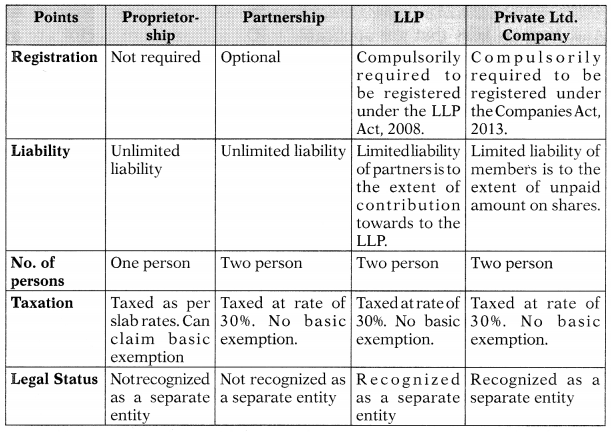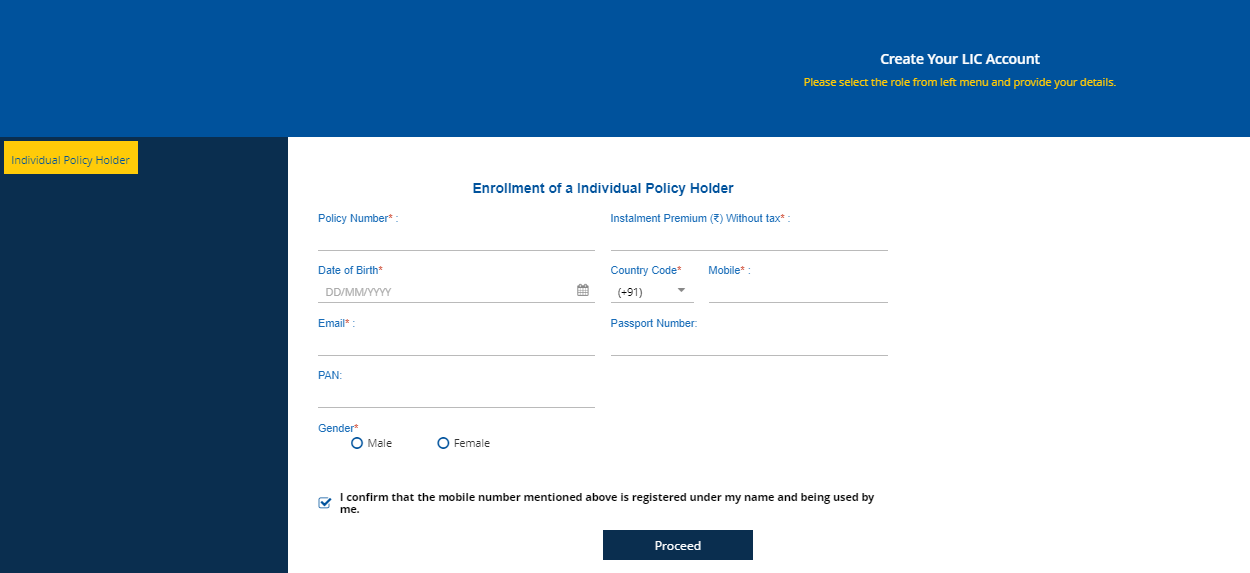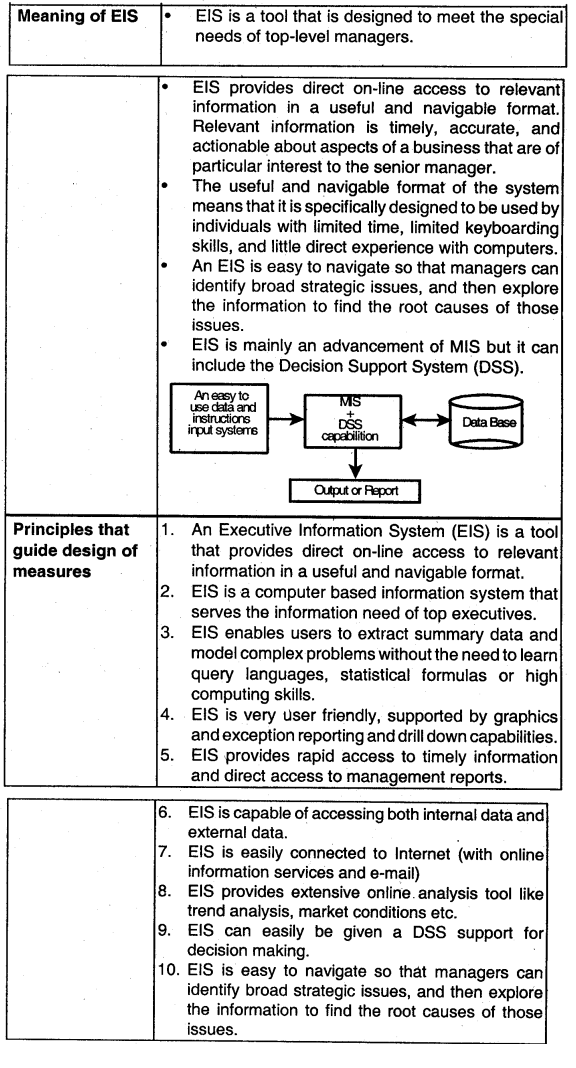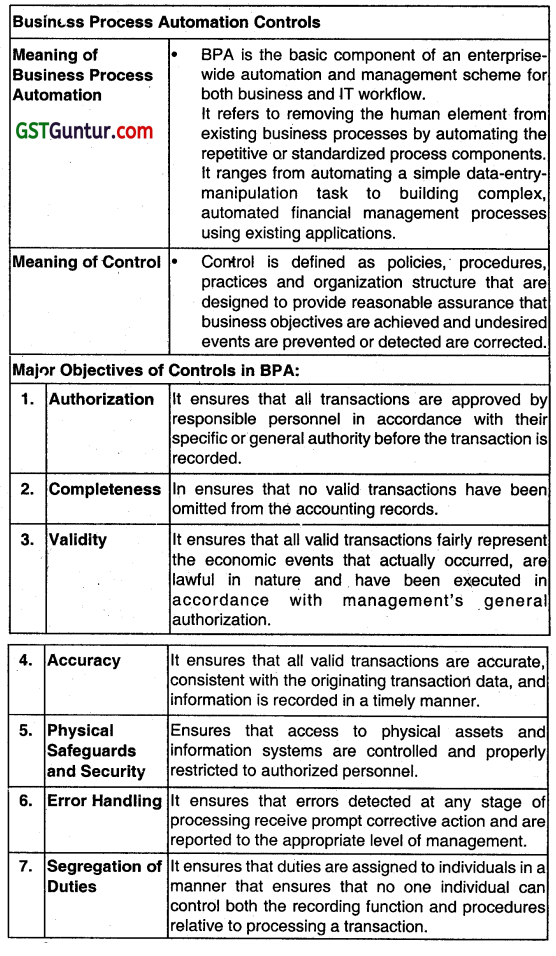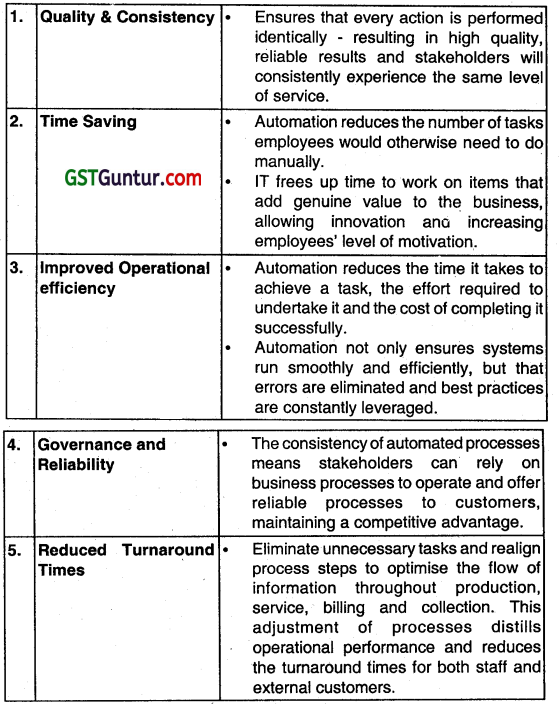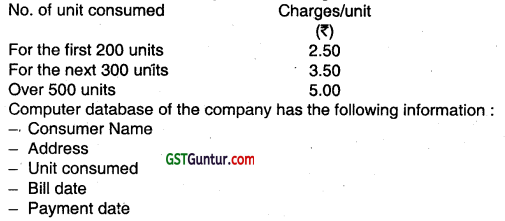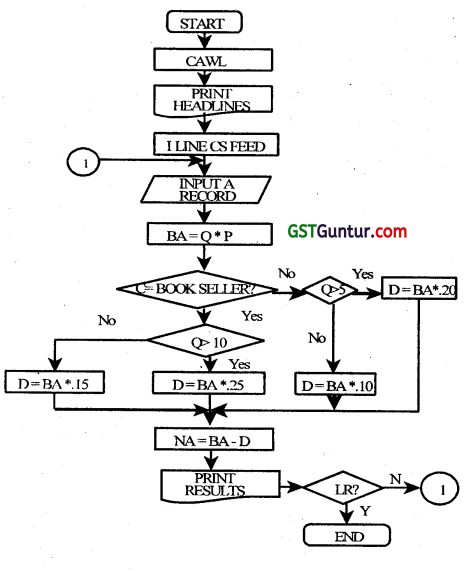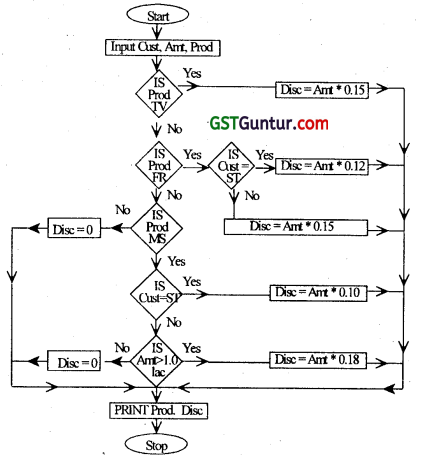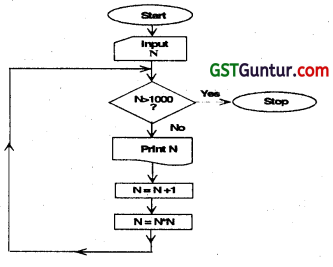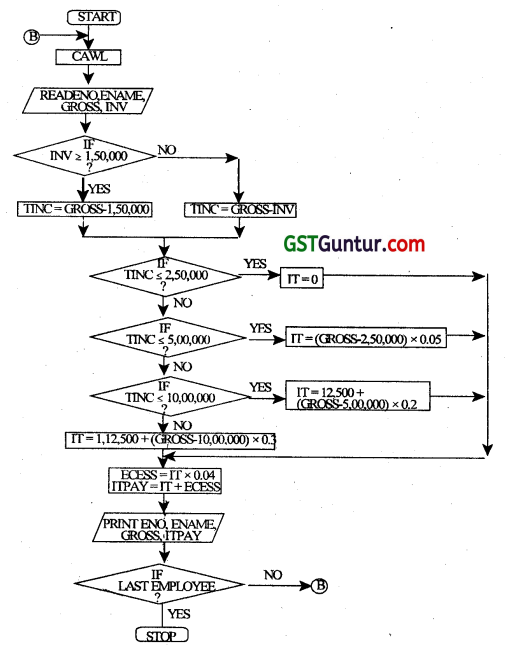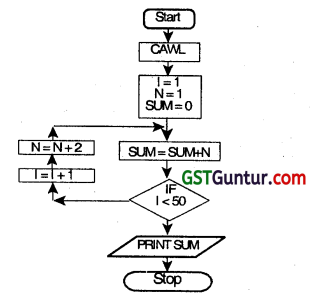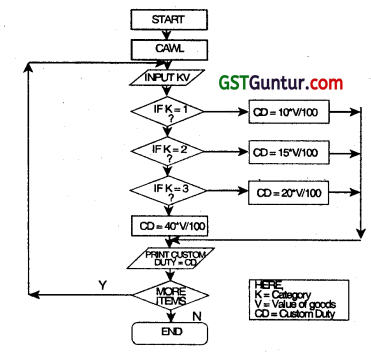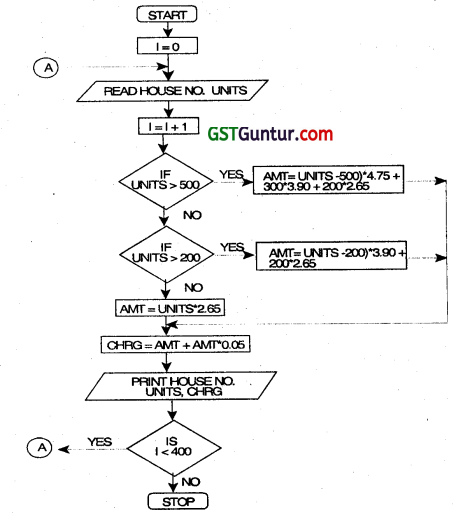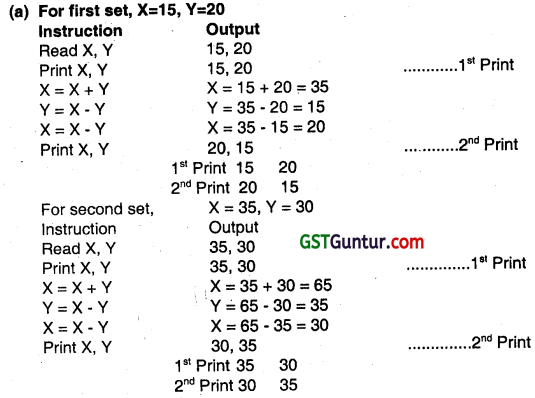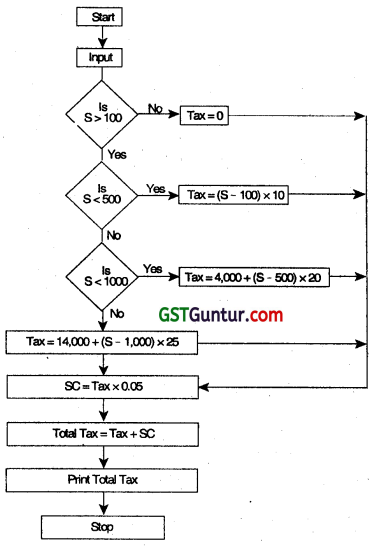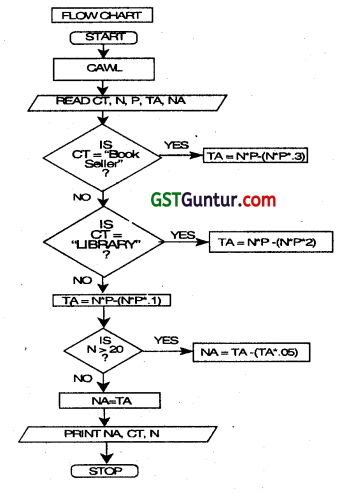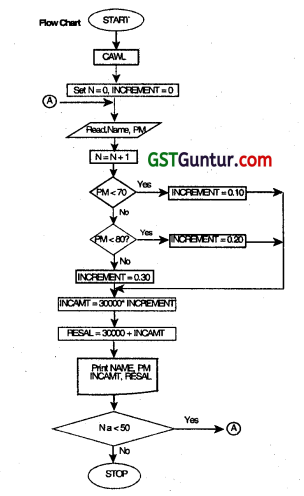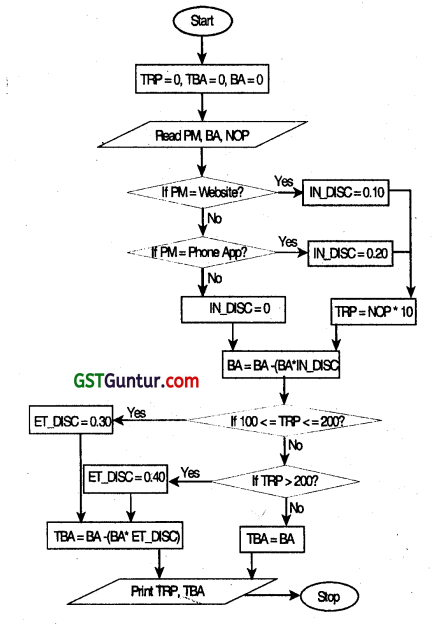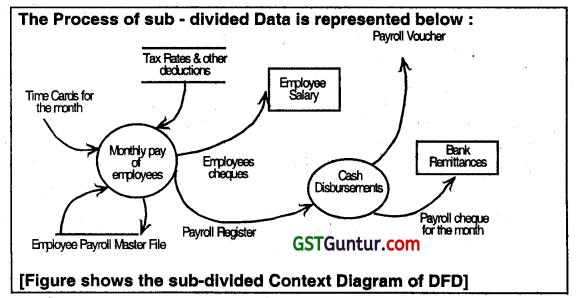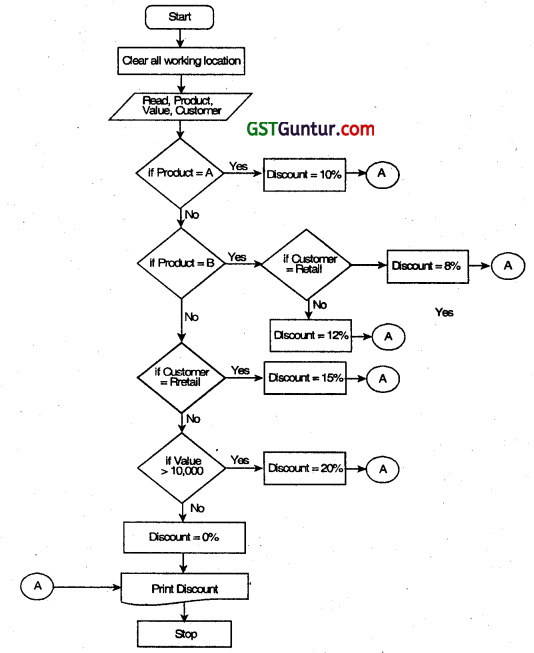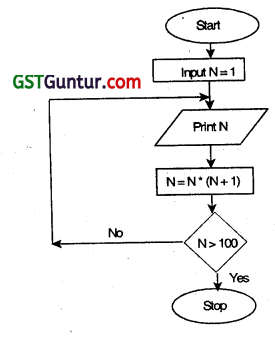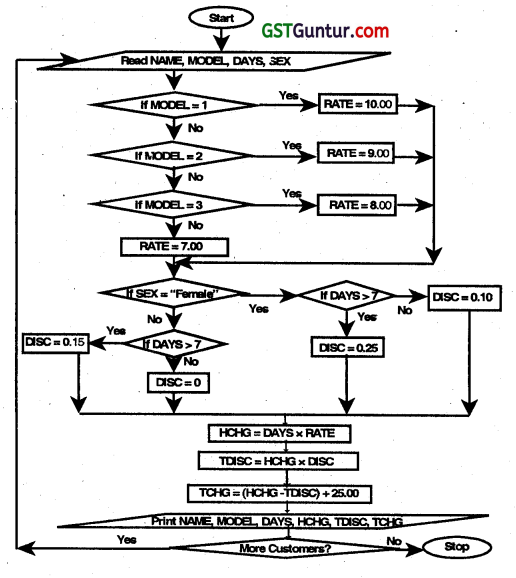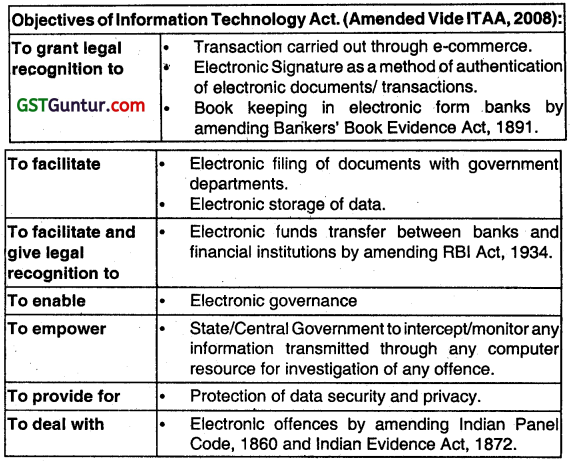The Companies (Amendment) Act, 2020 – CA Inter Law Question Bank is designed strictly as per the latest syllabus and exam pattern.
The Companies (Amendment) Act, 2020 – CA Inter Law Question Bank
BE it enacted by Parliament in the Seventy-fIrst Year of the Republic of India as follows:
short title and commencement
1. (1) This Act may be called the Companies (Amendment) Act. 2020.
(2) It shall come into force on such date as the Central Government may, by notification in the
Official Gazette, appoint:
Provided that different dates may be appointed for different provisions of this Act and any reference in any such provision to the commencement of this Act shall be construed as a reference to the coming into force of that provision.
Amendment of section 2 18 of 2013
2. In the Companies Act, 2013 (hereinafter referred to as the principal Act), in section 2, in clause (52), the following proviso shall be inserted, namely:-
“Provided that such class of companies, which have listed or intend to list such class of securities, as may be prescribed in consultation with the Securities and Exchange Board, shall not be considered as listed companies.”
Amendment of Section 8
3. In section 8 of the principal Act, in sub-section (11),-
(a) the words with imprisonment for a term which may extend to three years or shall be omitted;
(b) for the words twenty-five lakh rupees, or with both, the words ‘twenty-five lakh rupees” shall be substituted.
(c) after sub-section (10), the following sub-section shall be inserted, namely:- “(11) The Central Government may, by notification exempt any classes class or classes of persons from complying with any of the requirements of this section, except sub-section (10), if it is considered necessary to grant such exemption in the public interest and any such exemption may be granted either unconditionally or subject to such conditions as may be specified in the notification.
Amendment of section 90
19. In section 90 of the Principal Act,-
(a) for sub-section (10), title following sub-seCtic.fl shall be substituted, namely:-
“(10) If any person tails to make a declaration as required under subsection (1), he shall be liable to a penalty of fifty thousand rupees and in case of continuing failure, with a further penalty of one thousand rupees for each day after the first during which such failure continues, subject to a maximum of two lakh rupees.”;
(b) for sub-section (11), the following sub-section shall be substituted, namely:-
”(11) If a company required to maintain register under sub-section (2) and file the information under sub-section (4) or required to take necessary steps under sub-section (4A), fails to do so or denies inspection as provided therein, the company shall be liable to a penalty of one Lakh rupees and in case of continuing failure, with a further penalty of five hundred rupees for each day, after the during which such failure continues, such a maximum of five lakh rupees and every officer of the company who is in default shall be liable to a penalty of twenty-five thousand rupees and ¡n case of continuing failure, with
a further penalty of two hundred rupees for each day, after the first during which such failure continues, subject to a maximum of one lakh rupees.”.

Amendment of section 92
20. In section 92 of the principal Act,-
(a) in sub-section (5),-
- for the words “fifty thousand rupees”, the words “ten thousand rupees” shall be substituted;
- for the words “five lakh rupees”, the words “two lakh rupees in case of a company and fifty thousand rupees in case of an officer who is in default” shall be substituted;
(b) in sub-section (6), for the words ‘punishable with fine which shall not be less than fifty
thousand rupees but which may extend to five lakh rupees”, the words “liable to a penalty of
two lakh rupees” shall be substituted.
Amendment of section 105
21. In section 105 of the principal Act, in sub-section (5) –
(a) for the words ‘who knowingly issues the invitations as aforesaid or wilfully authorises or permits their issue shall be punishable with fine which may extend to one lakh rupees”, the words “who issues the invitation as aforesaid or authorises or permits their issue, shall be liable to a penalty of fifty thousand rupees’ shall be substituted;
(b) in the proviso, for the word punishable”. the word ‘liable” shall be substituted.
Amendment of section 117
22. In section 117 of the principal Act,—
(i) for sub-section (2), the following sub-section shall be substituted, namely:—
“(2) If any company fails to file the resolution or the agreement under sub-section (1)before the expiry of the period specified therein, such company shall be liable to a penalty of ten thousand rupees and in case of continuing failure, with a further penalty of one hundred rupees for each day after the first during which such failure continues, subject to a maximum
of two lakh rupees and every officer of the company who is in default including liquidator of the company, it any, shall be liable to a penalty of ten thousand rupees and in case of continuing failure, with a further penalty of one hundred rupees for each day after the first during which such failure continues, subject to a maximum of fifty thousand rupees.”;
(ii) in sub-section (3), in clause (g), for the second proviso, the following proviso shall be substituted, namely:—
“Provided further that nothing contained in this clause shall apply in respect of a resolution passed to grant loans, or give guarantee or provide security in respect of loans under clause (f) of sub-section (3) of section 179 in the ordinary course of its business by, —
(a) a banking company;
(b) any class of non-banking financial company registered under
2 of 1934
Chapter IIIB of the Reserve Bank of India Act. 1934, as may be prescribed in consultation with the Reserve Bank of India;
53 of 1987
(c) any class of housing finance company registered under the National Housing Bank Act, 1987, as may be prescribed in consultation with the National Housing Bank: and”.
Amendment of In section 124
23. of the principal Act, for sub-section section 124 (7), the following sub-section shall be substituted, namely:—
“(7) If a company fails to comply with any of the requirements of this section, such company shall be liable to a penalty of one Iakh rupees and in case of continuing failure, with a further penalty of five hundred rupees for each day after the first during which such failure continues, subject to a maximum of ten Iakh rupees and every officer of the company who is in default shall be liable to a penalty of twenty-five thousand rupees and in case of continuing failure, with a further penalty of one hundred rupees for each day after the first during which such failure continues, subject to a maximum of two lakh rupees.’

Amendment of section 128
24. In section 128 of the principal Act, in sub-section (6),—
(a) the words “with imprisonment for a term which may extend to one year or” shall be omitted;
(b) the words “or with both” shall be omitted.
Insert on of new section 129A Periodical financial results.
25. After section 129 of the principal Act, the following section shall be inserted, namely:-
“129A. The Central Government may, require such class or classes of unlisted companies, as may be prescribed,-
(a) to prepare the financial results of the company on such periodical basis and in such form as may be prescribed;
(b) to obtain approval of the Board of Directors and complete audit or limited review of such periodical financial results in such manner as may be prescribed; and
(c) file a copy with the Registrar within a period of thirty days of completion of the relevant period with such feos as may be prescribed.
Amendment of section 134
26. In section 134 of the principal Act, for sub-section (8), the following sub-section shall be substituted, namely:—
“(8) If a company is in default in complying with the provisions of this section, the company shall be liable to a penalty of three lakh rupees and every officer of the company who is in default shall be liable to a penalty of fifty thousand rupees.
Amendment of section 135
27. In section 135 of the principal Act,—
(a) In sub-section (5), after the second proviso, the following proviso shall be inserted. namely:-
“Provided also that it the company spends an amount in excess of the requirements provided under this sub-section, such company may set off such excess amount against the requirement to spend under this sub-section for such number of succeeding financial years and in such manner, as may be prescribed.;
(b) for sub-section (7), the following sub-section shall be substituted, namely:-
‘(7) If a company is in default in complying with the provisions of sub-section (5) or sub-section (6), the company shall be liable to a penalty of twice the amount required to be transferred by the company to the Fund specified in Schedule VII or the Unspent Corporate Social Responsibility Account, as the case may be, or one crore rupees, which ever is less, and every officer of the company who is in default shall be liable to a penalty of one-tenth of the amount required to be transferred by the company to such Fund specified in Schedule VII. or the Unspent Corporate Social Responsibility Account, as the case may be, or two lakh rupees, whichever is less.”:
(c) after sub-section (8) the following sub-section shall be inserted, namely:-
“(9) Where the amount to be spent by a company under sub-section (5) does not exceed fifty lakh rupees, the requirement under sub-section (1) for the constitution of the Corporate Social Responsibility Committee shall not be applicable and the functions of such Committee provided under this section shall, in such cases, be discharged by the Board of Directors of such company.”
Amendment of section 135
28. In section 137 of the principal Act, in sub-section (3),—
(a) for the words “one thousand rupees for every day during which the failure continues but which shall not be more than ten lakh rupees”, the words “ten thousand rupees, and in case of continuing failure, with a further penalty of one hundred rupees for each day during which such failure continues, subject to a maximum of two Iakh rupees,” shall be substituted:
(b) for the words “one lakh rupees”, the words “ten thousand rupees” shall be substituted;
(c) for the words “five Iakh rupees, the Words “fifty thousand rupees” shall be substituted.
Amendment of section 140
29. In section 140 of the principal Act, in sub-section (3), for the words “five lakh rupees, the words “two lakh rupees” shall be substituted.
Amendment of section 143
30. In section 143 of the principal Act, for sub-section (15), the following sub-section shall be substituted, namely:-
“(15) If any auditor, cost accountant, or company secretary in practice does not comply with the provisions of sub-section (12), he shall,-
(a) in case of a listed company, be liable to a penalty of five Lakh rupees; and
(b) in case of any other company, be liable to a penalty of one lakh rupees.”.
Amendment of section 147
31. In section 147 of the Principal Act,-
(a) in sub-section (1),-
(i) the words “with imprisonment for a term which may extend to one year or” shall be omitted;
(ii) for the words one Iakh rupees, or with both”, the words “one lakh rupees shall be substituted:
(b) in sub-section (2), the word and figures, “section 143” shall be omitted.
Amendment of section 149
32. In section 149 of the principal Act, in sub-section (9), the following proviso shall be inserted, namely:-
‘Provided that if a company has no profits or its profits are inadequate, an independent director may receive remuneration, exclusive of any fees payable under sub-section (5) of section 197, in accordance with the provisions of Schedule V.”.
Amendment of section 165
33. In section 165 of the principal Act, for sub-section (6), the following sub-section shall be substituted, namely:-
“(6) If a person accepts an appointment as a director in violation of this section. he shall be liable to a penalty of two thousand rupees for each day after the first during which such violation continues, subject to a maximum of two lakh rupees.”.
Amendment of section 167
34. In section 167 of the principal Act, in sub-section (2),-
(a) the words “with imprisonment for a term which may extend to one year or shall be omitted;
(b) for the words “five lakh rupees, or with both” the words “five . latch rupees” shall be substituted.
Amendment of section 172
35. For section 1 72 of the principal Act, the following section shall be substituted, namely:-
172. If a company is in default in complying with any of the provisions of this Chapter and for which no specific penalty or punishment is provided therein, the company and every officer of the company who is in default shall be liable to a penalty of titty thousand rupees, and in case of continuing failure, with a further penalty of five hundred rupees for each day during which such failure continues, subject to a maximum of three lakh rupees in case of a company and one lakh rupees in case of an officer who is in default.’
Amendment of section 178
36. In section 178 of the principal Act, in sub-section (8), for the words “punishable with fine which shall not be less than one lakh rupees but which may extend to five lakh rupees and every officer of the company who is in default shall be punishable with imprisonment for a term which may extend to one year or with fine which shall not be less than twenty-five thousand rupees but which may extend to one lakh rupees, or with both”, the words “liable to a penalty of five lakh rupees and every officer of the company who is in default shall be liable to a penalty of one lakh rupees” shall be substituted.
Amendment of section 184
37. In section 184 of the principal Act, in sub-section (4), for the words “punishable with imprisonment for a term which may extend to one year or with fine which may extend to one lakh rupees, or with both”, the words “liable to a penalty of one lakh rupees shall be substituted.

Amendment of section 187
38. In section 187 of the principal Act, for sub-section (4), the following sub-section shall be substituted, namely:-
“(4) 11 a company is in default in complying with the provisions of this section. the company shall be liable to a penalty of five lakh rupees and every officer of the company who s in default shall be liable to a penalty of fifty thousand rupees.
Amend ment of section 188
39. In section 188 of the Principal Act. In subsection (5),-
(a) in clause (i), for the words “punishable with imprisonment for a term which may extend to one year or with fine which shall not be less than twenty-five thousand rupees but which may extend to five lakh rupees, or with both”, the words “liable to a penalty of twenty-five Lakh rupees” shall be substituted;
(b) in clause (ii), for the words “punishable with fine which shall not be less than twenty-five thousand rupees but which may extend to five lakh rupees”, the words “liable to a penalty of five lakh rupees shall be substituted.
Amendment of section 197
40. In section 197 of the principal Act, In sub-section (3), after the words “whole-time director or manager,”, the words “or any other non-executive director, including an independent director” shall be inserted.
Amendment of section 204
41. In section 204 of the principal Act, in sub-section (4), for the words punishable with tine which shall not be less than one lakh rupees but which may extend to five lakh rupees”, the words “liable to a penalty of two lakh rupees” shall be substituted.
Amendment of section 232
42. In section 232 of the principal Act, for sub-section (8), the following sub-section shall be substituted, namely:-
“(8) It a company fails to comply with sub-section (5), the company arid every officer of the company who is in default shall be liable to a penalty of twenty thousand rupees, and where the failure is a continuing one, with a further penalty of one thousand rupees for each day after the first during which such failure continues, subject to a maximum of three lakh rupees.’
Amendment of section 242
43. In section 242 of We Principal Act, in sub-section (8),-
(a) the words “with imprisonment for a term which may extend to six months or” shall be omitted;
(b) for the words one lakh rupees, or with both”, the words “one lakh rupees shall, be substituted.
Amendment of section 243
44. In section 243 of the principal Act, in sub-section (2) –
(a) the words “with imprisonment for a term which may extend to six months or” shall be omitted;
(b) for the words live lakh rupees, or with both”, the words “five lakh rupees” shall be substituted.
Amendment of section 247
45. I section 247 of the Principal Act, in sub-section (3), for the words “punishable with fine which shall not be less than twenty-five thousand rupees but which may extend to one Iakh rupees”, the words ‘liable to a penalty of fifty thousand rupees” shall be substituted.
Amendment of section 284
46. In section 284 of the principal Act, for sub-section (2), the following sub-sections shall be substituted, namely:-
“(2) If any person required to assist or cooperate with the Company Liquidator under sub-section (1) does not assist or cooperate, the Company Liquidator may make an application to the Tribunal for necessary directions.
(3) On receiving an application under sub-section
(2), the Tribunal shall, by an order, direct the person required to assist or cooperate with the Company Liquidator to comply with the instructions of the Company Liquidator and to cooperate with him in discharging his functions and duties.
Amendment of section 302
47. In section 302 of the Principal Act,-
(a) for sub-section (3), the following sub-section shall be substituted, namely:-
“(3) The Tribunal shall, within a period of thirty days from the date of the order,-
(a) forward a copy of the order to the Registrar who shall record in the register relating to the company a minute of the dissolution of the company; and
(b) direct the Company Liquidator to forward a copy of the order to the Registrar who shall record in the register relating to the company a minute of the dissolution of the company.” (b) sub-section (4) shall be omitted.
Amendment of section 342
48. In section 342 of the principal Act, sub-section (6) shall be omitted.
Amendment of section 347
49. In section 347 of the principal Act, in sub-section (4),-
(a) the words “with imprisonment for a term which may extend to six months or” shall be omitted;
(b) for the words “fifty thousand rupees, or with both, the words fifty thousand rupees shall be substituted.
Amendment of section 348
50. In section 348 of the principal Act,-
(a) for sub-section (6), the following sub-section shall be substituted, namely:-
“(6) Where a Company Liquidator, who is an insolvency professional registered under the Insolvency and Bankruptcy Code, 2016 is in default in complying with the provisions of this section, then such default shall be deemed to be a contravention of the provisions of the said Code, and the rules and regulations made thereunder for the purposes of proceedings under Chapter VI of Part IV of that Code.; (b) sub-section (7) shall be omitted.
Amendment of section 356
51. In section 356 of the Principal Act, for sub-section (2), the following sub-section shall be substituted, namely:-
“(2) The Tribunal shall—
(a) forward a copy of the order, within thirty days from the date there of, to the Registrar who shall record the same; and
(b) direct the Company Liquidator or the person on whose application the order was made, to file a certified copy of the order, within thirty days from the date thereof or such further period as allowed by the Tribunal, with the Registrar who shall record the same.”

Insertion of new Chapter XXIA.
52. After section 378 of the Principal Act, the following
Chapter shall be inserted, namely:-
Chapter XXIA
Producer Companies
Part I
Preliminary
Definitions
378A. In this Chapter, unless the context otherwise requires,-
(a) ‘Active Member” means a Member who fulfills the quantum and period of patronage of the Producer Company as may be required by the articles;
(b) “Chief Executive means an individual appointed as such under sub-section (1) of section 378W;
39 of 2002
(c) “inter-State co-operative society” means a multi-State co-operative society as defined in clause (p) of section 3 of the Multi-State Co-operative Societies Act, 2002, and includes any cooperative society registered under any other law for the time being In force, which has, subsequent to its formation, extended any of its objects to more than one State by enlisting the participation of persons or by extending any of its activities outside the State, whether directly or indirectly or through an institution of which it is a constituent;
(d) “limited return” means the maximum dividend as may be specified by the articles;
(e) Member means a person or Producer Institution (whether incorporated or not) admitted as a Member of a Producer Company and who retains the qualifications necessary for continuance as such;
(f) mutual assistance principles means the principles set out in subsection (2) of section 378G;
(g) “officer” includes any director or Chief Executive or Secretary or any person in accordance with whose directions or instructions part or whole of the business of the Producer Company is carried on;
(h) “patronage” means the use of services offered by the Producer Company to its Members by participation in its business activities;
(i) “patronage bonus” means payments made by a Producer Company oui of its surplus income to the Members in proportion to their respective patronage;
(j). “primary produce” means –
(k) produce of farmers, arising from agriculture (including animal husbandry, horticulture, floriculture, pisciculture, viticulture, forestry, forest products, re-vegetation, bee raising and farming plantation products), or from any other primary activity or service which promotes the interest of the farmers or consumers; or
(ii) produce of persons engaged in handloom, handicraft, and other cottage industries; or
(iii) any product resulting from any of the above activities, including by-products of such products; or
(iv) any product resulting from an ancillary activity that may assist or promote any of, the aforesaid activities or anything ancillary thereto; or
(v) any activity which is intended to increase the production of anything referred to in sub-clauses (i) to (iv) or improve the quality thereof;
(k) producer means any person engaged in any activity connected with or relatable to any primary produce;
(l) Producer Company means a body corporate having objects or activities specified in section 378B and registered as Producer Company under this Act or under the Companies Act, 1956;
1 of 1956
(m) Producer lnstitutiòn means a Producer Company or any other institution having only producer or producers or Producer Company or Producer Companies as its member whether incorporated or not having any of the objects referred to n section 378B and which agrees to make use of the services of the Producer Company or Producer Companies as provided in its articles;
(n) withheld price” means part of the price due and payable for goods supplied by any Member to the Producer Company; and as withheld by the Producer Company for payment on a subsequent date.
Objects of Producer Company
Part II Incorporation of Producer Companies and Other Matters
378B. (1) The objects of the Producer Company shall relate to all or any of the following matters, namely:—
“(a) production, harvesting, procurement, grading, pooling, handling, marketing, selling, export of primary produce of the Members or import of goods or services for their benefit: Provided that the Producer Company may carry on any of the activities specified in this clause either by itself or through other institutions;
(b) processing including preserving, drying. distilling, brewing, venting, canning, and packaging of produce of its Members;
(c) manufacture sale or supply of machinery, equipment, or consumables mainly to its Members;
(d) providing education on the mutual assistance principles to its Members and others;
(e) rendering technical services, consultancy services, training, research and development, and all other activities for the promotion of the interests of its Members;
(f) generation, transmission, and distribution of power, revitalization of land and water resources, their use, conservation and communications relatable to primary produce;
(g) insurance of producers or their primary produce;
(h) promoting techniques of mutuality and mutual assistance;
(I) welfare measures or facilities for the benefit of Members as may be decided by the Board;
(J) any other activity, ancillary or incidental to any of the activities referred to in clauses (a) to (i) or other activities which may promote the principles of mutuality and mutual assistance amongst the Members in any other manner;
(k) financing of procurement, processing, marketing or other activities specified in clauses (a) to (j) which include extending of credit facilities or any other financial services to its Members.”.
2. Every Producer Company shall deal primarily with the produce of its active Members for carrying out any of Its objects specified in this section.

Formation of Producer Company and its registration.
378C.
1. Any ten or more individuals, each of them being a producer or any two or more Producer
Institutions, or a combination of ten or more individuals and Producer Institutions, desirous of forming a Producer Company having its objects specified in section 378B and otherwise complying with the requirements of this Chapter and the provisions of this Act in respect of registration, may form an incorporated company as a Producer Company under this Act.
2. If the Registrar is satisfied that all the requirements of this Act have been complied with in respect of registration and matters precedent and incidental thereto, he shall, within thirty days of the receipt of the documents required for registration, register the memorandum, the articles, and other documents, if any, and issue a certificate of incorporation under this Act.
3. A Producer Company so formed shall have the liability of its Members limited by the memorandum to the amount, if any, unpaid on the shares respectively held by them and be termed a company limited by shares.
4. The Producer Company may reimburse to its promoters all other direct costs associated with the promotion and registration of the company including registration, legal fees, printing of a memorandum and articles and the payment thereof shall be subject to the approval at its first general meeting of the Members.
5. On registration under sub-section (2), the Producer Company shall become a body corporate as if it is a private limited company to shall not, under any circumstance, become or be deemed to become a whats ever, public limited company under this Act.
Membership and voting rights of Members of Producer Company
378D.
1.
(a) In a case where the membership consists solely of individual Members, the voting rights shall be based on a single vote for every Member, irrespective of his shareholding or patronage of the Producer Company.
(b) In a case where the membership consists of Producer Institutions only, the voting rights of such Producer Institutions shall be determined on the basis of their participation In the business of the Producer Company in the previous year, as may be specified by articles: Provided that during the first year of registration of a Producer Company, the voting rights shall be determined on the basis of the shareholding by such Producer Institutions.
(c) In a case where the membership consists of individuals and Producer Institutions, the
voting rights shall be computed on the basis of a single vote for every Member.
2. The articles of any Producer Company may provide for the conditions, subject to which a Member may continue to retain his membership, and the manner in which voting rights shall be exercised by the Members.
3. Not with standing anything contained in sub-section
- or sub-section
- any Producer Company may. if so authorized by its articles, restrict the voting rights to active Members, in any special or general meeting.
4. No person, who has any business interest which is in conflict with business of the Producer Company, shall become a Member of that Company.
5. A Member, who acquires any business interest which is in conflict with the business of the Producer Company shall cease to be a Member of that Company and be removed as a Member in accordance with the articles.
Benefits to Members
378E.
1. Subject to the provisions made in articles, every Member shall initially receive only such value for the produce or products pooled and supplied as the Board of Producer Company may determine, and the withheld price may be disbursed later in cash or in kind or by allotment of equity shares, in proportion to the produce supplied to the Producer Company during the financial year to such extent and in such manner and subject to such conditions as may be decided by the Board.
2. Every Member shall, on the share capital contributed, receive only a limited return: Provided that every such Member may be allotted bonus shares in accordance with the provisions contained in section 378ZJ.
3. The surplus if any, remaining alter making provision for payment of limited return and reserves referred to in section 378J, may be disbursed as patronage bonus, amongst the Members, in proportion to their participation in the business of the Producer Company, either in cash or by way of allotment of equity shares, or both, as may be decided by the Members at the general meeting.
Memorandum of Producer Company
378F. The memorandum of association of every Producer Company shall state-
(a) the name of the company with “Producer Company Limited as the last words of the name of such Company;
(b) the State in which the registered office of the Producer Company is to situate;
(c) the main objects of the Producer Company shall be one or more of the objects specified in section 378B;
(d) the names and addresses of the persons who have subscribed to the memorandum;
(e) the amount of share capital with which the Producer Company is to be registered and division thereof into shares of a fixed amount;
(f) the names, addresses and occupations of the subscribers being producers, who shall act as the first directors in accordance with sub-section (2) of section 378J;
(g) that the liability of its members is limited;
(h) against the subscriber’s name, the number of shares each subscriber takes: Provided that no subscriber shall take less than one share;
(i) that in case the objects of the Producer Company are not confined to one State, the States to whose territories the objects extend.
Articles of association
378G
1. There shall be presented, for registration to the Registrar of the State to which the registered office of the Producer Company is, stated by the memorandum of association, to be situated-
- memorandum of the Producer Company;
- its articles duly signed by the subscribers to the memorandum.
(2) The articles shall contain the following mutual assistance principles, namely:—
(a) the membership shall be voluntary and available, to all eligible persons who can participate or avail of the facilities or services of the Producer Company, and are willing to accept the duties of membership;
(b) each Member shall save as otherwise provided in this Chapter. have only a single vote irrespective of the shareholding;
(c) the Producer Company shall be administered by a Board consisting of persons elected or
appointed as directors In the manner consistent with the provisions of this Chapter and the Board shall be accountable to the Members;
(d) particulars on limited return on share capital;
(e) the surplus arising out of the operations of the Producer Company shall be distributed in an equitable manner by-
- providing for the development of the business of the Producer Company;
- providing for common facilities; and
- distributing amongst the Members, as may be admissible in proportion to their respective participation in the business;
(f) provision for the education of Members, employees, and others, on the principles of mutuality and techniques of mutual assistance;
(g) the Producer Company shall actively cooperate with other Producer Companies (and other organizations following similar principles) at Local, national or international level so as to best serve the interest of their Members and the communities it purports to serve.

3. Without prejudice to the generality of the foregoing provisions of sub-sections (1) and (2), the articles shall contain the following provisions, namely:—
(a) the qualifications for membership, the conditions for continuance or cancellation of membership and the terms, conditions, and procedure for transfer of shares;
(b) the manner of ascertaining the patronage and voting right based on patronage;
(c) subject to the provisions contained in sub-section (1) of section 378N, the manner of constitution of the Board, its powers and duties, the minimum and maximum number of directors, manner of election and appointment of directors, and retirement by rotation, qualifications for being elected or continuance as such and the terms of office of the said directors, their powers and duties, conditions for election or co-option of directors, method of removal of directors and the filling up of vacancies on the Board, and the manner and the terms of appointment of the Chief Executive;
(d) the election of the Chairman, term of office of directors and the Chairman, manner of voting at the general or special meetings of Members, procedure for voting, by directors at meetings of the Board, powers of the Chairman, and the circumstances under which the Chairman may exercise a casting vote;
(e) the circumstances under which, and the manner in which, the withheld price is to be determined and distributed;
(f) the manner of disbursement of patronage bonus in cash or by issue of equity shares, or both:
(g) the contribution to be shared and related matters referred to in sub-section (2) of section 378ZI;
(h) the matters relating to issue of bonus shares out of general reserves as set out in section 378ZJ;
(i) the basis and manner of allotment of equity shares of the Producer Company in lieu of the whole or part of the sale proceeds of produce or products supplied by the Members;
(j) the amount of reserves, sources from which funds may be raised, limitation on raising of funds, restriction on the use of such funds and the extent of debt that may be contracted and the conditions thereof;
(k) the credit, loans or advances which may be granted to a Member and the conditions for the grant of the same;
(l) the right of any Member to obtain information relating to general business of the company;
(m) the basis and manner of distribution and disposal of funds available after meeting liabilities in the event of dissolution or liquidation of the Producer Company;
(n) the authorization for division, amalgamation, merger creation of subsidiaries and the entering into joint ventures and other matters connected therewith;
(o) laying of the memorandum and articles of the Producer Company before a special general meeting to be held within ninety days of its registration;
(p) any other provision, which the Members may, by special resolution recommend to be included in the articles.
Amendment of memorandum
378H.
1. A Producer Company shall not alter the conditions contained in its memorandum except in the cases. by the mode and to the extent for which express provision is made in this Act.
2. A Producer Company may, by special resolution, not inconsistent with section 378B, alter its objects specified in its memorandum.
3. A copy of the amended memorandum, together with a copy of the special resolution duly certified by two directors, shall be filed with the Registrar within thirty days from the date of adoption of any resolution referred to in subsection (2):
Provided that in the case of transfer of the registered office of a Producer Company from the jurisdiction of and Registrar to another, certified copies of the special resolution certified by two directors shall be filed with both the Registrars within thirty days, and each Registrar shall record the same, and thereupon the Registrar from whose jurisdiction the office is transferred, shall forthwith forward to the other Registrar all documents relating to the Producer Company.
(4) The alteration of the provisions of memorandum relating to the change of the place of its registered office from one State to another shall not take effect unless it is approved by the Central Government on an application in such form and manner as may be prescribed.

Amendment of articles
378-I
1. Any amendment of the articles shall be proposed by not less than two-thirds of the elected directors or by not less than one-third of the Members of the Producer Company, and adopted by the Members by a special resolution.
2. A copy of the amended articles together with the copy of the special resolution, both duly certified by two directors, shall be filed with the Registrar within fifteen days from the date of its adoption.
Option to Inter-State co-operative societies to become Producer Companies.
378J.
1. Notwithstanding anything contained in sub-section (1) of section 378C, any inter-State co-operative society with objects not confined to one State may make an application to the Registrar for registration as Producer Company under this Chapter.
2. Every application under sub-section (1) shall be accompanied by-
(a) a copy of the special resolution, of not less than two-thirds of total members of inter-State cooperative society, for its incorporation as a Producer Company under this Act;
(b) a statement showing—
- names and addresses or the occupation of the directors and the Chief Executive. If any, by whatever name called, of such co-operative; and
- list of members of such inter-State co-operative society;
(c) a statement indicating that the inter-State co-operative society is engaged in any one or more of the objects specified in section 378B;
(d) a declaration by two or more directors of the inter-State co-operative society certifying that particulars given in clauses (a) to (c) are correct.
3. When an inter-State co-operative society is registered as a Producer Company, the words Producer Company Limited’ shall form part of its name with any word or expression to show its identity preceding it.
4. On compliance with the requirements of sub-sections (1) to (3). the Registrar shall, within a period of thirty days of the receipt of application, certify under his hand that the inter-State cooperative society applying for registrations registered and thereby incorporated as a Producer Company under this Chapter.
5. A cooperative society formed by producers. by federation or union of co-operative societies of producers or co-operatives of producers, registered under any law for the time being in force which has extended its objects outside the State, either directly or through a union or federation of co-operatives of which It is a constituent, as the case may be, and any federation or unions of such co-operatives, which has so extended any of its objects or activities outside the State. shall be eligible to make an application under sub-section (1) and to obtain registration as a Producer Company under this Chapter.
6. The inter-State co-operative society shall, upon registration under sub-section (1), stand transformed into a Producer Company, and thereafter shall be governed by the provisions of this Chapter to the exclusion of the law by which It was earlier governed, save in so far as anything done or omitted to be done before its registration as a Producer Company, and notwithstanding anything contained in any other law for the time being in force, no person shall have any claim against the co-operative institution or the company by reason of such conversion or transformation.
7. Upon registration as a Producer Company, the Registrar of Companies who registers the company shall forthwith intimate the Registrar with whom the erstwhile inter-State co-operative society was earlier registered for deletion of the society from its register.
Effect of Incorporation of Producer Company
378K. Every shareholder of the inter-State co-operative society immediately before the date of registration of Producer Company (hereafter in this Chapter referred to as the date of transformation) shall be deemed to be registered on and from that date as a shareholder of the Producer Company to the extent of the face value of the shares held by such shareholder.
Vesting of undertaking in Producer Company
378L
1. All properties and assets, movable and immovable, of or belonging to, the inter-State co-operative society as on the date of transformation, shall vest in the Producer Company.
2. All the rights, debts, liabilities, interests, privileges and obligations of the inter-State co-operative society as on the date of transformation shall stand transferred to, and be the rights, debts liabilities, interests, privileges and obligations A, the Producer Company.
3. Without prejudice to ‘e provisions contained in sub-section (2), all debts, liabilities, and obligations incurred, all contracts entered into, and all matters and things engaged to be done by. with or for, The society as on the date of transformation for or in connection with their purposes, shall be deemed to have been incurred, entered into, or engaged to be done by, with or for, the Producer Company.
4. All sums of money due to the inter-State co-operative society immediately before the date of transformation, shall be deemed to be due to the Producer Company.
5. Every organization, WhiCh was being managed immediately before the date of transformation by the inter-State co-operaPve society shall be managed by the Producer Company for such period, to such extent and in such manner as the circumstances may require.

6. Every organization which was getting financial, managerial or technical assistance from the inter-State co-operative society, immediately before the date of transformation. may continue to be given financial, managerial or technical assistance, as the case may be, by the Producer Company, for such period, to such extent and in such manner as that company may deem fit.
7. The amount representing the capital of the erstwhile inter-State cooperative society shall form part of the capital of the Producer Company.
8. Any reference to the inter-State co-operative society in any law other than this Act or in any contract o other instrument, shall be deemed to be reference to the Producer Company.
9. If, on the date of transformation, there is pending any suit, arbitration, appeal or other legal proceedings of whatever nature by or against the inter-State co-operative society, the same shall not abate, be discontinued, or be in any way prejudicially affected by reason of the incorporation of the Producer Company under section 378C or transformation of the inter-State, cooperative society as a Producer Company under Section 378J, as the case may be, but the Suit, arbitration, appeal or other proceedings, may be continued, prosecuted and enforced by or against the Producer Company in the same manner and to the same extent as it would have, or may have been continued, prosecuted and enforced by or against the inter-State co-operative society as if the provisions contained in this Chapter had not come into force.
Concession. etc., to be deemed to have been granted to Producer Company
378M. With effect from the date of transformation, all fiscal and other concessions, licenses, benefits, privileges, and exemptions granted to the inter-State co-operative society in connection with the affairs and business of the inter-State co-operative society under any law for the time being ¡ri force shall be deemed to have been granted to the Producer Company.
Provisions In respect of officers and other employees of inter-State co-operative society.
378N. ‘
1. Notwithstanding anything contained in section 378-O, all the directors in the inter-State cooperative society before the incorporation of the Producer Company shall continue in office for a period of one year from the date of transformation and in accordance with the provisions of this Act.
2. Every officer or other employee of the inter-State co-operative society (except a director of the Board, Chairman or Managing Director) serving in its employment immediately before the date of transformation shall, in so far as such officer or other employee is employed in connection with the inter-State co-operative society which has vested in the Producer Company by virtue of this Act, become, as from the date of transformation, an officer or, as the case may be, other employees of the Producer Company and shall held his office or service therein by the same tenur‚ at the same remuneration, upon the same terms and conditions, with the same obligations and with the same rights and privileges as to leave, leave travel concession, welfare scheme, medical benefits scheme, insurance, provident fund, other funds, retirement, voluntary retirement, gratuity, and other benefits as he would have held under the erstwhile inter-State cooperative society if its undertaking had not vested in the Producer Company and shall continue to do so as an officer or, as the case may be, other employees of the Producer Company.
3. Where an officer or other employee of the inter-State co-operative society opts under sub-section (2) not to be in employment or service of the Producer Company, such officer or other employee shall be deemed to have resigned.
4. Not with standing anything contained in the 14 of 1947 Industrial Disputes Act, 1947 or in any other law for the time being in force, the transfer of the services of any officer or other employee of the inter-State co-operative society to the Producer Company shall not entitle such officer or other employees to any compensation under this Act or under any other law for the time being in force and no such claim shall be entertained by any court, tribunal or other authority.
5. The officers and other employees who have retired before the date of transformation from the service of the inter-State co-operative society and are entitled to any benefits, rights or privileges, shall be entitled to receive the same benefits, rights or privileges from the Producer Company.
6. The trusts of the provident fund or the gratuity fund of the inter-State co-operative society and any other bodies created for the welfare of officers or employees shall continue to discharge functions in the Producer Company as was being done hitherto in the inter-State co-operative society and any tax exemption granted to the provident fund or the gratuity fund would continue to be applied to the Producer Company.
7. Not withstanding anything contained in this Act or in any other law for the time being in force or in the regulations of the inter-State co-operative society, no director of the Board, Chairman, Managing Director or any other person entitled to manage the whole or substantial part of the business and affairs of the inter-State co-operative society shall be entitled to any compensation against the inter-State co-operative society or the Producer Company for the loss of office or for the premature termination of any contract of management entered into by him with the inter-State co-operative society.
Number of directors
Part III Management of Producer Company
378-O. Every Producer Company shall have at least five and not more than fifteen directors:
Provided that in the case of an inter-State co-operative society incorporated as a °roducer Company, such company may have more tian fifteen directors for a period of one year from the date of its incorporation as a Producer Company.
Appointment of directors
378P
1. Save as otherwise provided in section 378N, the Members who sign the memorandum and the articles may designate therein the Board of Directors, not less than five, who shall govern the affairs of the Producer Company until the directors are elected in accordance with the provisions of this section.
2. The election of directors shall be conducted within a period of ninety days of the registration of the Producer Company:
Provided that in the case of an inter-State co-operative society which has been registered as a Producer Company under sub-section (4) of section 378J in which at least five directors [including the directors continuing in office under sub-section (1) of section 378NJ hold office as such on the date of registration of such company, the provisions of this subsection shall have effect as it for the words ninety days, the words ‘three hundred and sixty-five days” had been substituted.
3. Every person shall hold office of a director for a period not less than one year but not exceeding five years as may be špecified in the articles.
4. Every director, who retires in accordance with the articles, shall be eligible for re-appointment as a director.
5. Save as otherwise provided in subsection (2) the directors of the Board shall be elected or appointed by the Members in the annual general meeting.
6. The Board may co-opt one or more expert directors or an additional director not exceeding one-fifth of the total number of directors or appoint any other person as additional director for such period as the Board may deem fit: Provided that the expert directors shall not have the right to vote in the election of the Chairman but shall be eligible to be elected as Chairman if so provided by its articles: Provided further that the maximum period, for which the expert director or the additional director holds office, shall not exceed such period as may be specified in the articles.

Vacation of office by directors
378Q
1. The office of the director of a Producer Company shall become vacant if,-
(a) he is convicted by a court of any offense involving moral turpitude and sentenced in respect thereof to imprisonment for not less than six months;
(b) the Producer Company, in which he is a director, has made a default in repayment of any advances or loans taken from any company or institution or any other person and such default continues for ninety days;
(c) he has made a default in repayment of any advances or loans taken from the Producer Company in which he is a director;
(d) the Producer Company. in which he is a director—
- has not filed the annual accounts and annual return for any continuous three financial years; or
- has failed to, repay its deposit or withheld price or patronage bonus or interest thereon on due date, or pay dividend and such failure continues for one year or more;
(e) default is made in holding an election for the office of director, in the Producer Company in which he is a director, in accordance with the provisions of this Act and articles;
(f) the annual general meeting or extraordinary general meeting of the Producer Company, In which he is a director, is not called in accordance with the provisions of this Act except due to natural calamity or such other reason.
2. The provisions of sub-section (1) shall, as far as may be, apply to the director of a Producer Institution which is a rember of a Producer Company.
Powers and Functions of Board
378R
1. Subject to the provisions of this Act and articles, the Board of Directors of a Producer Company shall exercise all such powers and to do all such acts and things, as that Company is authorised so to do.
2. In particular and without prejudice to the generality of the foregoing powers, such powers may include all or any of the following matters, namely:-
(a) determination of the dividend payable;
(b) determination of the quantum of withheld price and recommend patronage to be approved at general meeting;
(c) admission of new Members;
(d) pursue and formulate the organizational policy, objectives, establish specific long-term and annual objectives, and approve corporate strategies and financial plans:
(e) appointment of a Chief Executive and such other officers of the Producer Company, as may be specified in the articles;
(f) exercise superintendence, direction, and control over Chief Executive and other officers appointed by it;
(g) cause proper books of account to be maintained; prepare annual accounts to be placed before the annual general meeting with the report of the auditor and the replies on qualifications, if any, made by the auditors;
(h) acquisition or disposal of property of the Producer Company in its ordinary course of business;
(i) investment of the funds of the Producer Company in the ordinary course of its business;
(j) sanction any loan or advance, in connection with the business activities of the Producer Company to any Member, not being a director or his relative;
(k) take such other measures or do such other acts as may be required in the discharge of its functions or exercise of its powers.
(3) All the powers specified in sub-section (1) and (2) shall be exercised by the Board, by means of resolution passed at its meeting on behalf of the Producer Company.
Explanation.- For the removal of doubts, it is hereby declared that a director or a group of directors, who do not constitute the Board, shall not exercise any of the powers exercisable by it.
Matters to be 378S. The Board of Directors of a Producer Company transacted at shall exercise the following powers on behalf of that general Company, and it shall do so only by means of meeting resolutions passed at the annual general meeting of its Members, namely:-
- approval of budget and adoption of annual accounts of the Producer Company;
- approval of patronage bonus;
- issue of bonus shares;
- declaration of limited return and decision on the distribution of patronage;
- specify the conditions and limits of loans that may be given by the Board to any director; and
- approval of any transaction of the nature as is to be reserved in the articles for approval by the Members.
Liability of directors
378T,
1. When the directors vote for a resolution, or approve by any other means, anything done in contravention of the provisions of this Act or any other law for the time being in force or articles, they shall be jointly and severally liable to make good any loss or damage suffered by the Producer Company.
2. Without prejudice to the provisions contained in sub-section (1), the Producer Company shall have the right to recover from its director—
(a) where such director has made any profit as a result of the contravention specified in sub-section (1). an amount equal to the profit so made;
(b) where the Producer Company incurred a loss or damage as a result of the contravention specified in sub-sectIon (1), an amount equal to that loss or damage.
3. The liability imposed under this section shall be In addition to and not in derogation of a liability imposed on a director under this Act or any other law for the time being in force.
Committee of directors
378U
1. The Board may constitute such number of committees as it may deem fit for the purpose of assisting the Board in the efficient discharge of Its functions: Provided that the Board shall not delegate any of its powers or assign the powers of the Chief Executive, to any committee.
2. A committee constituted under sub-section (1) may, with the approval of the Board, co-opt such number of persons as it deems fit as members of the committee: Provided that the Chief Executive appointed under section 378W or a director of the Producer Company shall be a member of such committee.
3. Every such committee shall function under the general superintendence, direction, and control of the Board, for such duration, and in such manner as the Board may direct.
4. The fee and allowances to be paid to the members of the committee shall be such as may be determined by the Board.
5. The minutes of each meeting of the committee shall be placed before the Board at its next meeting.
Meetings of Board and Quorum
378V.
1. A meeting of the Board shall be held not less than once in every three months and at least four such meetings shall be held in every year.
2. Notice of every meeting of the Board of Directors shall be given ¡n writing to every director for the time being in India, and at his usual address in India to every other director.
3. The Chief Executive shall give notice as aforesaid not less than seven days prior to the date of the meeting of the Board and if he fails to do so, he shall be liable to a penalty of five thousand rupees: Provided that a meeting of the Board may be called at shorter notice and the reasons thereof shall be recorded in writing by the Board.
4. The quorum for a meeting of the Board shall be one-third of the total strength of directors, subject to a minimum of three.
5. Save as provided in the articles, directors including the co-opted director, may be paid such fees and allowances for attendance at the meetings of the Board, as may be decided by the Members in the general meeting.

Chief Executive and his functions
378W.
1. Every Producer Company shall have a full-time Chief Executive, by whatever name called, to be appointed by the Board from amongst persons other than Members.
2. The Chief Executive shall be ex officio director of the Board and such director shall not retire by rotation.
3. Save as otherwise provided in articles, the qualifications, experience, and the terms and conditions of service of the Chief Executive shall be such as may be determined by the Board.
4. The Chief Executive shall be entrusted with substantial powers of management as the Board may determine.
5. Without prejudice to the generality of subsection (4), the Chief Executive may exercise the powers and discharge the functions, namely:—
(a) do administrative acts of a routine nature including managing the day-to-day affairs of the Producer Company;
(b) operate bank accounts or authorise any person, subject to the general or special approval of the Board in this behalf, to operate the bank account;
(c) make arrangements for state custody of cash and other assets of the Producer Company;
(d) sign such documents as may be authorised by the Board, for and on behalf of the company;
(e) maintain proper books of account; prepare annual accounts and audit thereof; place the audited accounts before the Board and in the annual general meeting of the Members;
(f) furnish Members with periodic information to apprise them of the operation and functions of the Producer Company;
(g) make appointments to posts in accordance with the powers delegated to him by the Board;
(h) assist the Board in the formulation of goals, objectives, strategies, plans, and policies;
(i) Advise the Board with respect to legal and regulatory matters concerning the proposed and ongoing activities and take necessary action in respect thereof;
(j) exercise the powers as may be necessary in the ordinary course of business;
(k) discharge such other functions, and exercise such other powers, as may be delegated by the Board.
6. The Chief Executive shall manage the affairs of the Producer Company under the general superintendence, direction, and control of the Board and be accountable for the performance of the Producer Company.
Secretary of Producer Company
378X.
1. Every Producer Company having an average annual turnover exceeding five crore rupees or such other amount as may be prescribed in each of three consecutive financial years shall have a whole-time secretary.
56 of 1980
2. No individual shall be appointed as whole-time secretary unless he possesses membership of the Institute of Company Secretaries of India constituted under the Company Secretaries Act, 1980.
3. It a Producer Company fails to comply with the provisions of sub-section (1), the Company and every officer of the Company who is in default, shall be liable to a penalty of one hundred rupees for every day during which the default continues subject to a maximum of rupees one lakh:
Provided that in any proceedings against a person in respect of a default under this sub-section, no penalty shall be imposed if it is shown that all reasonable efforts to comply with the provisions of sub-section (1) were taken or that the financial position of the Company was such that it was beyond its capacity to engage a whole-time secretary. 378Y. Unless the articles require a larger number,
Quorum
one-fourth of the total membership shall constitute the quorum at a general meeting.

Voting rights
378Z. Save as otherwise provided in sub-sections (1) and (3) of section 3780, every Member shall have one vote and In the case of equality of votes, the Chairman or the person presiding shall have a casting vote except in the case of election of the Chairman.
Annual general meetings
Part IV General Meetings
378ZA.
1. Every Producer Company shall in each year, hold, in addition to any other meetings, a general meeting, as its annual general meeting and shall specify the meeting as such in the notices calling it, and not more than fifteen months shall elapse between the date of one annual general meeting of a Producer Company and that of the next:
Provided that the Registrar may, for any special reason, permit extension of the time for holding any annual general meeting (not being the first annual general meeting) by a period not exceeding three months.
2. A Producer Company shall hold its first annual general meeting within a period of ninety days from the date of its incorporation.
3. The Members shall adopt the articles of the Producer Company and appoint directors of its Board in the annual general meeting.
(4) The notice calling the annual general meeting shall be accompanied by the following documents, namely:—
(a) the agenda of the annual general meeting;
(b) the minutes of the previous annual general meeting or the extraordinary general meeting:
(c) the names of candidates for election, if any, to the office of director including a statement of
qualifications in respect of each candidate;
(d) the audited balance sheet and profit and loss accounts of the Producer Company and its subsidiary, if any, together with a report of the Board of Directors of such Company with respect to-
- the state of affairs of the Producer Company;
- the amount proposed to be carried to reserve;
- the amount to be paid as limited return on share capital;
- the amount proposed to be disbursed as patronage bonus;
- the material changes and commitments, if any, affecting the financial position of the Producer Company and its subsidiary, which have occurred in between the date of the annual accounts of the Producer Company to which the balance sheet relates and the date of the report of the Board:
- any other matter of importance relating to energy conservation, environmental protection, expenditure or earnings in foreign exchanges;
- any other matter which is required to be, or maybe, specified by the Board;
(e) the text of the draft resolution for appointment of auditors;
(f) the text of any draft resolution proposiny amendment to the memorandum or articles to be considered at the general meeting. along with the recommendations of the Board.
5. The Board of Directors shall, on the requisition made in writing, duly signed and setting out the matters for consideration, made by one-third of the Members entitled to vote in any general meeting, proceed to call an extraordinary general meeting in accordance with the relevant provisions contained in Chapter VII.
6. Every annual general meeting shall be called, for a time during business hours, on a day that is not a public holiday and shall be held at the registered office of the Producer Company or at some other place with is a the city, town or village in which the registered office of the Company is situated.
7. A general meeting of the Producer Company shall be called by giving not less than fourteen clays prior notice in writing.
8. The notice of the general meeting indicating the date, time and place of the meeting shall be sent to every Member and auditor of the Producer Company.
9. Unless the articles of the Producer Company provide for a Larger number, one-fourth of the total number of members of the Producer Company shall be the quorum for its annual general meeting.
10. The proceedings of every annual general meeting along with the report of the Board of Directors, the audited balance-sheet and the profit and loss account shall be filed with the Registrar within sixty days of the date on which the annual general meeting is held, with an annual return along with the filing fees as applicable under the Act.
11. ln the case where a Producer Company is formed by Producer Institutions, such Institutions shall be represented in the general body through The Chairman or the Chief Executive thereof who shall be competent to act on its behalf: Provided that a Producer Institution shall not be represented if such Institution is in default or failure referred to in clauses (d) to (f) of sub-section (1) of section 378Q.
Share capital
Part V
Share Capital and Members Rights 378ZB.
1. The share capital of a Producer Company shall consist of equity shares only.
2. The shares held by a Member in a Producer Company, shall as far as may be, be in proportion to the patronage of that company.
Special user rights
378ZC.
1. The producers, who are active Members may. if so provided in the articles, have special rights and the Producer Company may issue appropriate instruments to them In respect of such special rights.
2. The instruments of the Producer Company issued under sub-section (1) shall, after obtaining approval of the Board in that behalf, be transferable to any other active Member of that Producer Company.
Explanation.-For the purposes of this section, the expression ‘special right means any right relating to supply of additional products by the active Member or any other right relating to his produce which may be conferred upon him by the Board.
Transferability of shares and attendant rights
378ZD.
- Save as otherwise provided In sub-sections (2) to (4), the shares of a Member of a Producer Company shall not be transferable.
- A Member of a Producer Company may, after obtaining the previous approval of the Board, transfer the whole or part of his shares along with any special rights, to an active Member at par value.
- Every Member shall, within three months of his becoming a Member in the Producer Company, nominate, in the manner specified in articles, a person to whom his shares in the Producer Company shall vest in the event of his death.
4. The nominee shall, on the death of the Member become entitled to all the rights In the shares of the Producer Company and the Board of that Company shall transfer the shares of the deceased Member to his nominee: Provided that in a case where such nominee is not a producer, the Board shall direct the surrender of shares together with special rights, if any, to the Producer Company at par value or such other value as may be determined by the Board.
5. Where the Board of a Producer Company is satisfied that-
- any Member has ceased to be a primary producer; or
- any Member has failed to retain his qualifications to be a Member as specified in articles, the Board shall direct the surrender of shares together with special rights, if any, to the Producer Company at par value or such other value as may be determined by the Board: Provided that the Board shall not direct such surrender of shares unless the Member has been served with a written notice and given an opportunity of being heard.
Books of account
Part VI
Finance, Accounts, and Audit
378ZE.
1. Every Producer Company shall keep at its registered office proper books of account with respect to-
- all sums of money received and expended by the Producer Company and the matters in respect of which the receipts and expenditures take place;
- all sales and purchase of goods by the Producer Company;
- the instruments of liability executed by or on behalf of the Producer Company;
- the assets and liabilities of the Producer Company;
- in case of a Producer Company engaged in production, processing, and manufacturing, the particulars relating to utilization of materials or labour or other items of costs.
2. The balance sheet and profit and loss accounts of the Producer Company shall be prepared, as far as may be, in accordance with the provisions contained in section 129.

Internal audit
378ZF. Every Producer Company shall have internal audit of its accounts carried out, at such interval and in such manner as may be specified in aides, by a chartered accountant as defined in clause (b) of sub-section (1) of section 2 of the Chartered Accountants Act, 1949.
38 of 1949 Duties of auditor under this Chapter
378ZG. Without prejudice to the provisions contained in section 143, the auditor shall report on the following additional matters relating to the Producer Company, namely:-
- the amount of debts due along with particulars of bad debts, if any;
- the verification of cash balance and securities;
- the details of assets and liabilities;
- all transactions which appear to be contrary to the provisions of this Chapter;
- the loans given by the Producer Company to the directors;
- the donations or subscriptions given by the Producer Company;
- any other matter as may be considered necessary by the auditor.
Donation or subscription by Producer Company
378ZH. A Producer Company may. by special resolution, make donation or subscription to any institution or individual for the purposes of-
(a) promoting the social and economic welfare of Producer Members or producers or general public; or
(b) promoting the mutual assistance principles: Provided that the aggregate amount of all such donations and subscriptions in any financial year shall not exceed three percent. of the net profit of the Producer Company in the financial year immediately preceding the financial year in which the donation or subscription was made: Provided further that Rio Producer Company shall make directly or indirectly to any political party or for any political purpose to any person any contribution or subscription or make available any facilities including personnel or material.
General and other reserves
378Z-I.
1. Every Producer Company shall maintain a general reserve in every financial year, in addition to any reserve maintained by it as may be specified in articles.
2. In a case where the Producer Company does not have sufficient funds in any financial year for transfer to maintain the reserves as may be specified in articles, the contribution to the reserve shall be shared amongst the Members in proportion to their patronage in the business of that Company in that year.
Issue of bonus shares
378ZJ. Any Producer Company may, upon recommendation of the Board and passing of resolution in the general meeting, issue bonus shares by capitalization of amounts from general reserves referred lo in section 378Z-I in proportion to the shares held by the Members on the date of the issue of such shares.
Loan, etc., to Members
Part VII
Loans to Members and Investments
378ZK. The Board may, subject to the provisions made in articles, provide financial assistance to the Members of the Producer Company by way of-
(a) credit facility, to any Member, in connection with the business of the Producer Company, for a period not exceeding six months;
(b) loans and advances, against security specified in articles to any Member, repayable within a period exceeding three months but not exceeding seven years from the date of disbursement of such loan or advances: Provided that any loan or advance to any director or his relative shall be granted only after the approval by the Members in general meetings.
Investment in other companies, formation of subsidiaries, etc.
378ZL.
1. The general reserves of any Producer Company shall be invested to secure the highest returns available from approved securities, fixed deposits, units, bonds issued by the Government or cooperative or scheduled bank or in such other mode as may be prescribed.
2. Any Producer Company may, for promotion of its objectives acquire the shares of another Producer Company.
3. Any Producer Company may subscribe to the share capital of, or enter into any agreement or other arrangement whether by way of formation of its subsidiary company, joint venture or in any other manner with any body corporate, for the purpose of promoting the objects of the Producer Company by special resolution in this behalf.
4. Any Producer Company, either by itself or together with its subsidiaries, may invest, by way of subscription, purchase or otherwise, shares in any other company, other than a Producer Company, specified under sub-section (2), or subscription of capital under sub-section (3), for an amount not exceeding thirty percent. of the aggregate of its paid-up capital and free reserves: Provided that a Producer Company may, by special resolution passed in its general meeting and with prior approval of the Central Government, invest in excess of the limité specified in this section.
5. All investments by a Producer Company may be made if such investments are consistent with the objects of the Producer Company.
6. The Board of a Producer Company may, with the previous approval of Members by a special resolution, dispose of any of its investments referred to in sub-sections (3) and (4).
7. Every Producer Company shall maintain a register containing particulars of all the investments, showing the names of the companies in which shares have been acquired, number and value of shares; the date of acquisition; and the manner and price at which any of the shares have been subsequently disposed of.
8. The register referred to in subsection (7) shall be kept at the registered office of the Producer Company and the same shall be open to inspection by any Member who may take extracts therefrom.
Penalty for contravention
Part VIII Penalties
378ZM
1. If any person, other than a Producer Company registered under this Chapter, carries on business under any name which contains the words “Producer Company Limited, he shall be punishable with time which may extend to ten thousand rupees for every day during which such name has been used by him.
2. If a director or an officer of a Producer Company. who wilfully fails to furnish any information relating to the affairs of the Producer Company required by a Member or a person duly authorized in this behalf, he shall be liable to imprisonment for a term which may extend to six months and with fine equivalent to five percent. of the turnover of that The company during the preceding financial year.
3. If a director or officer of a Producer Company-
- fails to hand over the custody of books of account and other documents or property in his custody to the Producer Company of which he is a director or officer; or
- fails to convene annual general meeting or other general meetings, he shall be punishable with fine which may extend to one lakh rupees, and in the case of a continuing default or failure, with an additional tine which may extend to ten thousand rupees for every day during which such default or failure continues.
Amalgamation, merger or division, etc., to form new Producer Companies
Part IX
Amalgamation, Merger or Division
378ZN.
1. A Producer Company may, by a resolution passed at its general meeting,—
- decide to transfer its assets and liabilities, in whole or In part, to any other Producer The company, which agrees to such transfer by a resolution passed at its general meeting, for any of the objects specified in section 378B;
- divide Itself into two or more new Producer Companies.
2. Any two or more Producer Companies may, by a resolution passed at any general or special meetings of its Members, decide to-
- amalgamate and form a new Producer Company; or
- merge one Producer Company (hereafter in this Chapter referred to as “merging company’) with another Producer Company (hereafter in this Chapter referred to as “merged company).
3. Every resolution of a Producer Company under this section shall be passed at its general meeting by a majority of total Members, with right of vote not less than two-thirds of its Members present and voting and such resolution shall contain all particulars of the transfer of assets and liabilities, or division, amalgamation, or merger, as the case may be.
4. Before passing a resolution under this section, the Producer Company shall give notice thereof in writing together with a copy of the proposed resolution to all the Members and creditors who may give their consent.
5. Notwithstanding anything contained in articles or in any contract to the contrary, any Member, or any creditor not consenting to the resolution shall, during the period of one month of the date of service of the notice on him, have the option,-
(a) In the case of any such Member, to transfer his shares with the approval of the Board to any active Member thereby ceasing to continue as a Member of that Company; or
(b) in the case of a creditor, to withdraw his deposit or loan or advance, as the case may be.
6. Any Member or creditor, who does not exercise his option within the period specified in sub-section (5), shall be deemed to have consented to the resolution.
7. A resolution passed by a Producer Company under this section shall not take effect until the expiry of one month or until the assent thereto of all the Members and creditors has been obtained, which ever is earlier.
8. The resolution referred to in this section shall provide for-
- the regulation of conduct of the affairs of the Producer Company in future;
- the purchase of shares or interest of any Members of the Producer Company by other Members or by the Producer Company;
- the consequent reduction of its share capital, in case of purchase of shares of one Producer Company by another Producer Company;
- termination, setting aside or modification of any agreement, howsoever arrived between the company on the one hand and the directors, secretaries and manager on the other hand, a part from such terms and conditions as may, in the opinion of the majority of shareholders, be just and equitable in the circumstances of the case;
- termination, setting aside or modification of any agreement between the Producer Company and any person not referred to in clause (d): Provided that no such agreement shall be terminated, set aside or modified except after giving due notice to the party concerned: Provided further that no such agreement shall be modified except after obtaining the consent of the party concerned;
- the setting aside of any transfer, delivery of goods, payment, execution or other act relating to property, made or done by or against the Producer Company within three months before the date of passing of the resolution, which would if made or done against any individual, be deemed in his insolvency to be a fraudulent preference;
- the transfer to the merged company of the whole or any part of the undertaking, property or liability of the Producer Company;
- the allotment or appropriation by the merged company of any shares, debentures, policies, or other like interests in the merged company;
- the continuation by or against the merged company of any legal proceedings pending by or against any Producer Company;
- the dissolution, without winding up, of any Producer Company:
- the provision to be made for the Members or creditors who make dissent;
- the taxes, if any, to be paid by the Producer Company;
- such incidental, consequential and supplemental matters as are necessary to secure that the division, amalgamation or merger shall be fully and effectively carried out.
9. When a resolution passed by a Producer Company under this section takes effect, the resolution shall be a sufficient conveyance to vest the assets and liabilities in the transferee.
10. The Producer Company shalt make arrangements for meeting in full or otherwise satisfying all claims of the Members and the creditors who exercise the option, within the period specified in sub-section (4), not to continue as the Member or creditor, as the case may be.
11. Where the whole of the assets and liabilities of a Producer Company are transferred to another Producer Company in accordance with the provisions of sub-section (9), or where there is merger under sub-section (2), the registration of the first mentioned Company or the merging company, as the case may be, shalt stand cancelled and that Company shall be deemed of have been dissolved and shall cease to exist forth with as a corporate body.
12. Where two or more Producer Companies are amalgamated into a new Producer Company in accordance with the provisions of sub-section (2) and the Producer Company so formed is duly registered by the Registrar, the registration of each of the amalgamating companies shall stand cancelled forthwith on such registration and each of the Companies shall thereupon cease to exist as a corporate body.
13. Where a Producer Company divides lise If into two or more Producer Companies in accordance with the provisions of clause (b) of sub-section (1) and the new Producer Companies are registered In accordance with the provisions of this Chapter, the registration of the erstwhile Producer Company shall stand cancelled forthwith and that Company shall be deemed to have been dissolved are ceased to exist as a corporate body.

14. The amalgamation, merger or division of companies under the ongoing sub-sections shall not in any manner whatsoever affect the pre-existing rights or obligations and any legal proceedings that might have been continued or commenced by or against any erstwhile company before the amalgamation, merger or division, may be continued or commenced by, or against, the concerned resulting company, or merged company, as the case may be.
15. The Registrar shall strike oft the names of every Producer Company deemed to have been dissolved under sub-sections (11) to (14).
16. Any member or creditor or employee aggrieved by the transfer of assets, division, amalgamation or merger may, within thirty days of the passing of the resolution, prefer an appeal to the Tribunal.
17. The Tribunal shall, after giving a reasonable opportunity to the person concerned, pass such orders thereon as it may deem fit.
18. Where an appeal has been filed under sub-section (16), the transferor assets, division, amalgamation or merger of the Producer Company shall be subject to the decision of the Tribunal.
Disputes
Part X Resolution of Disputes
378Z-O.
(1) Where any dispute relating to the formation, management or business of a Producer Company arises-
(a) amongst Members, former Members or persons claiming to be Members or nominees of deceased Members; or
(b) between a Member, former Member or a person claiming to be a Member or nominee
of deceased Member and the Producer Company, its Board of Directors, office-bearers, or liquidator, past or present; or
26 of 1996
(c) between the Producer Company or its Board. and any director, office-bearer or any former director, or the nominee, heir or legal representative of any deceased director of the Producer Company, such dispute shall be settled by conciliation or by arbitration as provided under the Arbitration and Conciliation Act, 1996 as it the parties to the dispute have consented in writing for determination of such disputes by conciliation or by arbitration and the provisions of the said Act shall apply accordingly.
Exploration.-For the purposes of this section, a dispute shall Include-
(a) a claim for any debt or other amount due;
(b) a daim by surety against the principal debtor, where the Producer Company has recovered from the surety amount in respect of any debtor or other amount due to it from the principal debtor as a result of the default of the principal debtor whether such debt or amount due be admitted or not;
(c) a claim by Producer Company against a Member for failure to supply produce as required of him;
(d) a claim by a Member against the Producer Company for not taking goods supplied by him.
2. If any question arises whether the dispute relates to the Formation, management or business of the Producer Company, the question shall be referred to the arbitrator, whose decision thereon shall be final.
Strike off name of Producer Company
Part Xl Miscellaneous Provisions
378ZP.
1. Where a Producer Company fails to comment. business within one year of its registration or ceases to transact business with the Members or if the Registrar is Datisfied, after making such inquiry as he thinks fit, that the Producer Company is no longer carrying on any of its objects specified in election 768, he shall make an order striking off the name of the Producer Compare, which shall thereupon cease to exist forthwith: Provided that no such order canceling the registration as aforesaid shall be passed until a notice to show cause has been given by the Registrar to the Producer Company with a copy to all its directors on the proposed action and reasonable opportunity to represent its case has been given.
2. Where the Registrar has reasonable cause to believe that a Producer Company is not maintaining any of the mutual assistance principles specified, he shall strike its name off the register in accordance with the provisions contained in section 248.
3. Any Member of a Producer Company, who is aggrieved by an order made under subsection (1), may appeal to the Tribunal within sixty days of the order.
4. Where an appeal is filed under sub-section (3), the order of striking off the name shall not take effect until the appeal is disposed of.
Provisions of this Chapter to override laws
378ZQ. The provisions of this Chapter shall have effect notwithstanding anything inconsistent therewith contained in this Act or any other for the time other laws being in force or any instrument having effect by virtue of any such law, but the provisions of any such Act or law or r.strument in so far as the same are not varied by, or are inconsistent with, the provisions of this Chapter shall apply to the Producer Company.
Application of provisions relating to private companies
378ZF
All the limitation restrictions and provisions of this Act, other than those specified in this chapter applicable to a private company shall as far as may be apply to a producer company as if it is a private limited company under this act in so far as they are not in conflict with the provisions of this chapter.
Re-conversion of Producer Company to Inter-State co-operative society,
PART XII
Re-Conversion of Producer Company to Inter-State Co-operative Society
378ZS.
1. Any Producer Company, being an erstwhile inter-State co-operative society, formed and registered under this Chapter, may make an application-
(a) after passing a resolution in the general meeting by not less than two-thirds ot its Members present and voting; or
(b) on request by itt creditors representing three-fourths value of its total creditors, to the Tribunal for its re-conversion to the inter-State co-operative society.
2. The Tribunal shall, on the application made under sub-section (1), direct holding meeting of its Members or such creditors, as the case may be, to be conducted in such manner as it may direct.
3. If a majority in number representing three-fourths in value of the creditors, or Members, as the case may be, present and voting In person at the meeting conducted in pursuance of the directions of the Tribunal under sub-section (2), agree for re-conversion, if sanctioned by the Tribunal, be binding on all the Members and all the creditors, as the case may be, and also on the company which is. being converted:
Provided that no order sanctioning re-conversion all be made by the Tribunal un!es the Tribunal is satisfied that the company or any other person by whom an application has been made under sub-section (1) has disclosed to the Tribunal, by affidavit or otherwise, all material facts relating to the company, such as the latest financial position of the company, the latest report of the auditor on the accounts of the company, the pendency of any investigation proceedings in relation to the company under Chapter XIV, and the like.
4. An order made by the Tribunal under sub-section (3) shall have no effect until a certified copy of the order has been filed with the Registrar.
5. A copy of every such order shall be annexed to every copy of the memorandum of the company issued after the certified copy of the order has been filed as aforesaid, or ¡n the case of a company not having a memorandum, to every copy so issued of the instrument constituting or defining the constitution of the company.
6. If default is made in compliance with sub-section (4), the company, and every officer of the company who is in default, shall be punishable with fine which may extend to one hundred rupees, for each copy in respect of which default is made.
7. The Tribunal may, at any time after an application has been made to it under this section, stay the commencement or continuation of any suit or proceeding against” the company on such terms as the Tribunal thinks fit until the application is finally disposed of.
8. Every Producer Company, which has been sanctioned re-conversion by the Tribunal, shall 39 of 2002. make an application under the Multi-State Co-operative Societies Act, 2002 or any other law for the time being in force for its registration as a multi-State co-operative society or co-operative society, as the case may be, within six months of sanction by the Tribunal and file a report thereof to the Tribunal and the Registrar of Companies and to the Registrar of the Co-operative Societies under which it has been registered as a multi-State co-operative society or co-operative society, as the case may be.

Power to modify Act in Its application to Producer Companies
378ZT.
(1) The Central Government may, by notification, direct that any of the provisions of this Act (other than those contained in this Chapter) specified in the said notification—
- shall not apply to the Producer Companies or any dass or category thereof; or
- shall apply to the Producer Companies or any class or category thereof with such exception or adaptation as may be specified in the notification.
2. A copy of every notification proposed to be issued under sub-section (1), shall be laid in draft before each House of Parliament, while it is in session, for a total period of thirty days which may be comprised in one session or in two or more successive sessions, and if, before the expiry of the session immediately following the session or the successive sessions aforesaid, both Houses agree in disapproving the issue of the notification or both Houses agree in making any modification in the notification, the notification shall not be issued or, as the case may be, shall be issued only in such modified form as may be agreed upon by both the Houses.
Power to make rules
378ZU. The Central Government may make rules for carrying out the purposes of this Chapter.’
Amendment of section 379
53. In section 379 of the principal Act, in sub-section (1), the proviso shall be omitted.
Amendment of section 392
54. In section 392 of the principal Act –
- the words “with imprisonment for a term which may extend to six months or” shall be omitted;
- for the words “five Iakh rupees, or with both”, the words “five lakh rupees” shall be substituted.
Insertion of new section 393A Exemptions under this Chapter
55. After section 393 of the principal Act, the following section shall be inserted, namely:-
“393A. The Central Government may, by notification, exempt any class of-
(a) foreign companies;
(b) companies incorporated or to be Incorporated outside India. whether the company has of has not established, or when formed may or may not establish, a place of business in India, as may be specified in the notification, from any of the provisions of this Chapter and a copy of every such notification shall, as soon as may be after it is made, be laid before
both Houses of Parliament.”.
Amendment of section 403
56. In section 403 of the principal Act, in sub-section
(1), for the third proviso, the following proviso shall be substituted, namely:-
“Provided also that where there is default on two or more occasions in submitting, filing, registering or recording of such document, fact or information, as may be prescribed, it may, without prejudice to any other legal action or liability under this Act, be submitted, filed, registered or recorded, as the case may be, on payment of such higher additional fee, as may be prescribed.”
Amendment of section 405
57. In section 405 of the principal Act, for sub-section (4), the following sub-section shall be substituted, namely:—
‘(4)11 any company fails to comply with an order made under subsection (1) or sub-section (3), or furnishes any information or statistics which is incorrect or incomplete in any material respect, the company and every officer of the company who in default shall be liable to a penalty of twenty thousand rupees and in case of continuing failure, I with a further penalty of one thousand rupees for each day after the first during which such failure continues, subject to a aximum of three lakh rupees.’.
Amendment of section 410
58. In section 410 of the principal Act-
- In the opening portion, the words not exceeding eleven’ shall be omitted;
- In clause (b), for the word, figures and letter “section 53N”, the word. figures and letter “section 53A’ shall be substituted.
Insertion of new section 418 A Benches of Appellate Tribunal
59. After section 4180f the principal Act, the following section shall be inserted, namely:—
“41 8A.
1. The powers of the Appellate Tribunal may be exercised by the Benches thereof to be constituted by the Chairperson:
Provided that a Bench of the Appellate Tribunal shall have at least one Judicial Member and one Technical Member.
2. The Benches of the Appellate Tribunal shall ordinarily sit at New Delhi or such other places as the Central Government may, in consultation with the Chairperson, notify:
12 of 2003.
1 of 1956.
31 of 2016.
Provided that the Central Government may, by notification, after consultation with the Chairperson, establish such number of Benches of the Appellate Tribunal, as it may consider necessary, to hear appeals against any direction, decision, or order referred to in section 53A of the Competition Act, 2002 and under section 61 of the Insolvency and Bankruptcy Code, 2016.”
Amendment of section 435
60. In section 435 of the principal Act, in sub-section
1. for the words “offenses under this Act, by notification”, the words and figures “offenses under this Act, except under section 452, by notification” shall be substituted.
Amendment of section 441
61. In section 441 of the principal Act, for sub-section (5), the following sub-section shall be substituted, namely:-
“(5) If any officer or other employee of the company who fails to comply with any order made by the Tribunal or the Regional Director or any officer authorised by the Central Government under sub-section (4), the maximum amount of fine for the offense proposed lo be compounded under this Section shall be twice the amount provided in the corresponding section in which punishment for such offense is provided.”
Substitution of new section for section 446B Lesser penalties for certain companies
62. For section 44GB of the principal Act, the following section shall be substituted, namely:-
‘446B. Notwithstanding anything contained in this Act, if penalty is payable for non-compliance of any of the provisions of this Act by a One Person Company, small company, start-up company or Producer Company, or by any of its officer in default, or any other person in respect of such company, then such company, its officer in default or any other person, as the case may be, shall be liable to a penalty which shall not be more than one-half of the penalty specified in such provisions subject to a maximum of two lakh rupees in case of a company and one lakh rupees in case of an officer who is h default or any other person, as the case may be.
Explanation.-For the purposes of this section,-
(a) ‘Producer Company” means a company as defined in clause (I) of section 378A;
1 of 1956
(b) “start-up company’ means a private company incorporated under this Act or under the Companies Act, 1956 and recognized as start-up in accordance with the notification issued by the Central Government in the Department for Promotion of Industry and Internal Trade.
Amendment of section 450.
63. In section 450 of the principal Act, for the words “punishable with fine which may extend to ten thousand species, and whore the contravention is continuing one. with a further fine which may extend to one the us and rupees for every day after the first during which the contravention continues”, the words ‘liable to a penalty of ten thousand rupees, and in
case of continuing contravention, with a further penalty of one thousand rupees for each day after the first during which the contravention continues, subject to a maximum of two lakh rupees in case of a company and fifty thousand rupees in caso of an officer who is in default or any other person shall be substituted.
Amendment of section 452
64. In section of the principal Act, in sub-section section 452 (2). the following proviso shall be inserted, namely:-
Provided that the imprisonment of such officer or employee, as the case may be, shall not be ordered for wrongful possession or withholding of 1923 a dwelling unit, if the court is satisfied that the company has not paid to that officer or employee. as the case may be, any amount relating to-
19 of 1923
- provident fund, pension fund, gratuity fund or any other fund for the welfare of its officers or employees, maintained by the company;
- compensation or liability for compensation under the Workmen’s Compensation Act, 1923 in respect of death or disablement.”
Amendment of section 454
65. In section 454 of the principal Act, in sub-section (3). the following proviso shall be inserted, namely:—
“Provided that in case the default relates to non-compliance of sub-section (4) of section 92 or sub-section (1) or sub-section (2) of section 137 and such default has been rectified either prior to or within thirty days of, the issue of the notice by the adjudicating officer, no penalty shall be imposed in this regard and all proceedings under this section in respect of such default shall be deemed to be concluded.”

Amendment of section 465
66. In section 465 of the principal Act, in sub-section (1),-
- the first proviso shall be omitted;
- In the second proviso, for the words ‘Provided further that”, the words “Provided that” shall be substituted;
- In the third proviso, for the words “Provided also that”, the words “Provided further that” shall be substituted.

